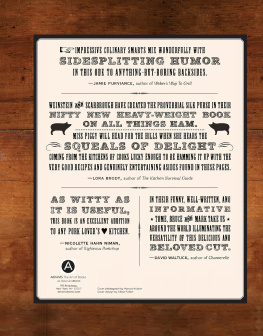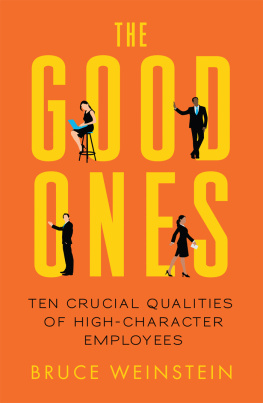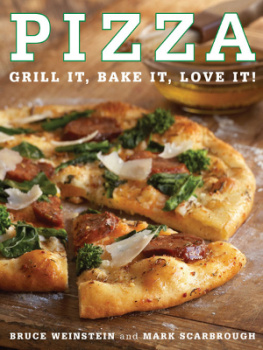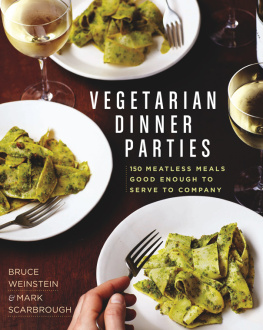making tea for two with a recipe for eight
Remember the old song Tea for Two? Romantic, yesbut hardly the stuff of most cookbooks, which offer recipes for what happens long after youve had your tea for two: once the kids come along, once the company starts dropping by. Sauts for six, casseroles for eight, cakes for ten.
Weve come by these grand designs honestly enough. Consider the holidays. Thanksgiving dinner may be the single most important meal of the yearand thats not to mention Hanukkah, Christmas, or even the traditional Fourth of July picnic. The crowded cooking spirit of those celebrations surely works itself back into our notions of everyday cooking. So were left with a 9 13-inch casserole on an ordinary Thursday night.
And what about the images weve seen on TV? The Brady Bunch, The Waltons, or even My Three Sons? Most of us would say the average American family has a mom, a dad, and two kids, if not more. But the U.S. Census Bureau reported in 2000 that the average U.S. family had just 3.14 members; the average household, just 2.59 members.
So despite our 9 13 dreams, we cook in smaller pots. And even if we occasionally cook for crowds, we get to those celebrations the old-fashioned way: by starting out with just two. We date, fall in love, get married. Or perhaps its not even as romantic as that. We have a standing dinner date with a friend on Wednesday nights, just the two of us.
We also tend to end up as twosomes: the children off to college, or on their own. Perhaps we lose a spouse. Or start over, a new life. Dating at forty, fifty, sixty. Or even this: the kids go away for the weekend, a week, or the summer, off to the grandparents or sports camp. So what do you do with that cherished meatloaf recipe? Make it and youre stuck with leftovers for a week. And cookies? One batch, four dozen.
So heres a cookbook for smaller pots. For mac and cheese, that comforting weeknight supper, but this time without any leftovers or any waste. Or for peanut butter oatmeal cookies. Six is the perfect number on Saturday night after the movies.
cooking in small batches without
that half-a-can-of-stock predicament
If youve ever cooked a typical recipe for two, you know the shtick. You use half a can of stock, or less, and then what? Youre left with that irritating can in the refrigerator, the one with aluminum foil wadded across the top, the one you throw out a week later. And what happens when the recipe calls for, say, two teaspoons of chopped onion? A week later, you come across those wiggly, brown slivers, laminated in plastic wrap, turning to mulch in your crisper.
We decided part of the secret to successful small-batch cooking was doing it without waste. So weve crafted techniques to cut down on the yield without larding your refrigerator with leftover bits and pieces. Youll buy what you use, use what you buy. For example, a small chicken egg is too large for a batch of six cookies or two brownies; so we offer alternatives: either pasteurized egg substitutes such as Egg Beaters or quail eggs. Instead of half a can of stock, we use the liquid that dried mushrooms have soaked in, or we make a small amount of broth with vegetables and herbs before adding meat to the stew. We use shallots instead of onions, vermouth (which keeps for months) instead of wine (which sometimes turns within hours of opening), and dried spices instead of fresh whenever appropriate.
Unfortunately, buying just what youll use isnt always so easy. At first glance, the modern supermarket is of little help. These days, everything is super-sized; tomatoes and onions have swollen to terrifying proportions.
But our big supermarkets can actually be quite helpful. Many now have butcher counters that will sell you one or two chicken breasts, or a quarter pound of hamburger; many sell grains or spices in bulk, allowing you to measure out what you need. At gourmet marketsand some neighborhood supermarkets that are getting in on this actyou can now buy a sprig of rosemary or a handful of mushrooms. Beets are in tubs; tomatoes, in baskets. True, you may have to dig for the petite versions under their gargantuan kin, but theyre down there. If not, let the produce manager of your market know there are people like you looking for smaller-sized bags of things like potatoes.
In our recipes, there are two notable exceptions to the buy what you use rule. First: dairy products. There are quantities in the ingredient lists such as 2 tablespoons heavy cream. There was simply no way to make a two-serving cream soup using a whole carton of creamnot without creating what could only be described as a soup milk shake. We experimented with powdered cream, but it turned gummy in soups. Besides, its not readily available. So up front, we admit we created recipes that used less than the whole when it comes to dairy. That said, cream is such a treat in your coffee the next morning!
The second exception is dried spices, various pantry staples, and the like. Of course, you cant buy the exact amount of, say, the flour you need for a recipe. Nonetheless, if stored properly, pantry staples will last for months, so buying a little now pays off the next time you cook.
fish and casseroles smell
after three days
Pet peeve number one: making a big pot of stew and then having to resort to strategies like eating it for three days running, or dividing it into small batches that get shoved to the back of the freezer, then pitched six months later. So the economics of cooking for two is not only to buy what youll use, but also to make what youll eat.
For workday dinners in minutes, how about a pasta dish such as Ziti with Curry Carrot Cream Sauce that makes just enough for two without leftovers? For dinner on a cold Sunday night, try one of the three stuffed baked potato recipes, each individual casseroles that bake up light and very comforting, a winter warmer in two potato skins. For a summery salad that makes just enough so you dont have to get up from the deck and put things in the refrigerator when the fireflies come out, theres Southwestern Chicken Salad or fresh Seafood Salad.
There are also plenty of small-batch baking recipes: cookies, cakes, and cobblers. You can indulge tonight without indulging all week. And there are a few things fit for quiet celebrations, the kind two people can have: Crawfish Stuffed Artichokes and Lemon Meringue Tarts.
Tea for two. It wasnt such a bad idea after all.
Most equipment for small-batch baking is a matter of common senseuse a small whisk, not a big balloon, to beat one egg and a teaspoon of sugar. But some pieces of equipment are necessary for precisions sake.
Baking Dishes Use a baking dish thats exactly the volume indicated. Smaller sizes mean volume variations are proportionally more momentous. Using a 3-cup instead of a 2-cup ramekin is like using a 9 13-inch baking dish instead of a 9-inch square.









